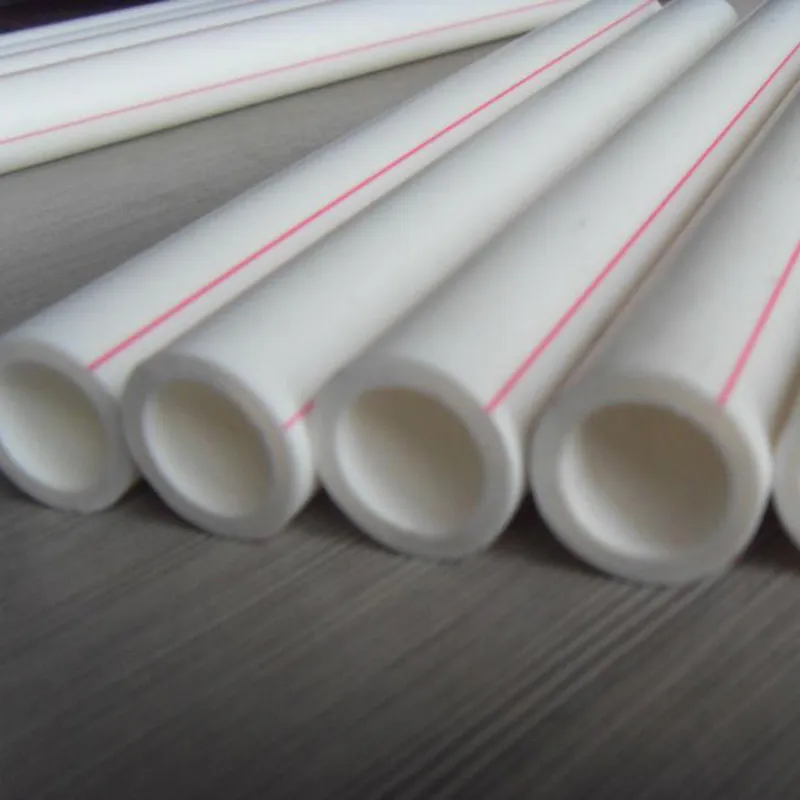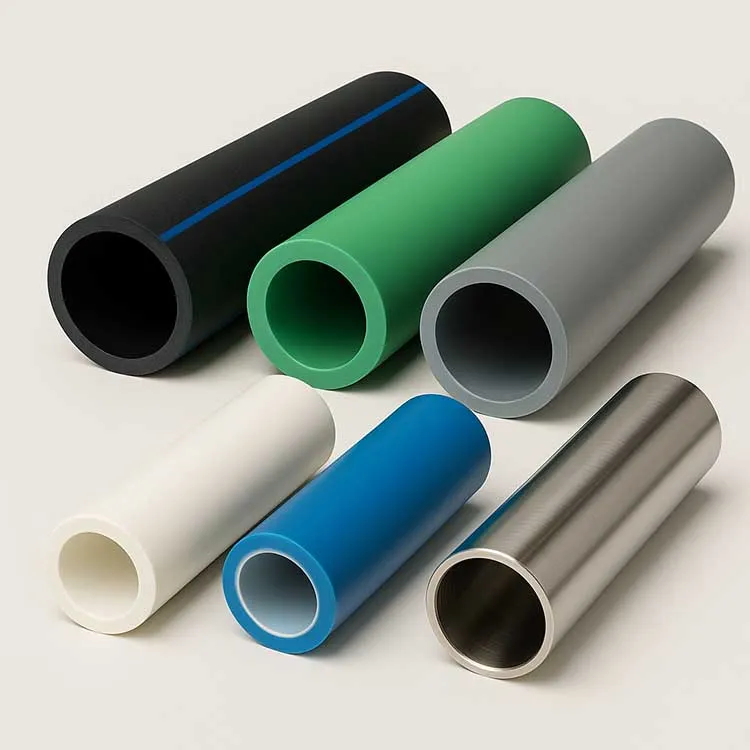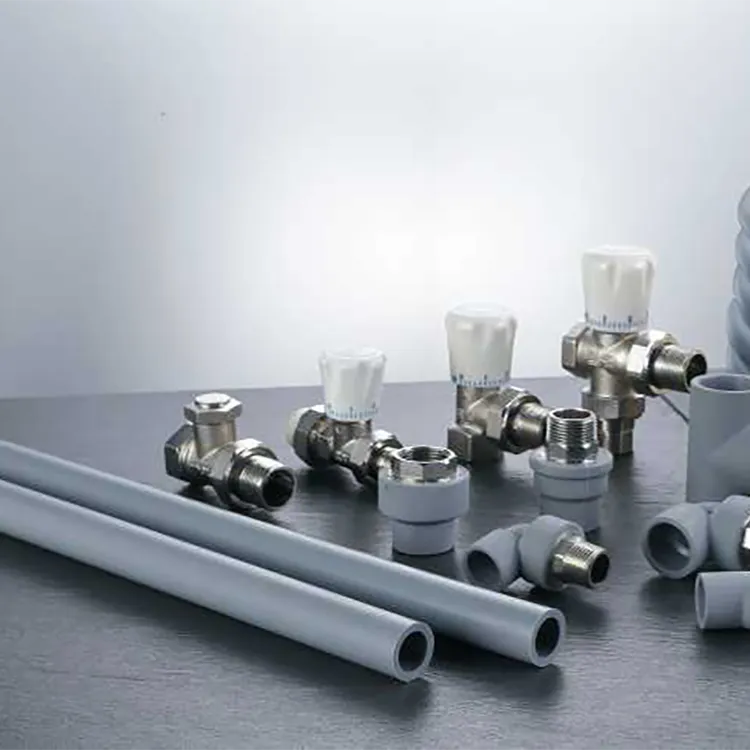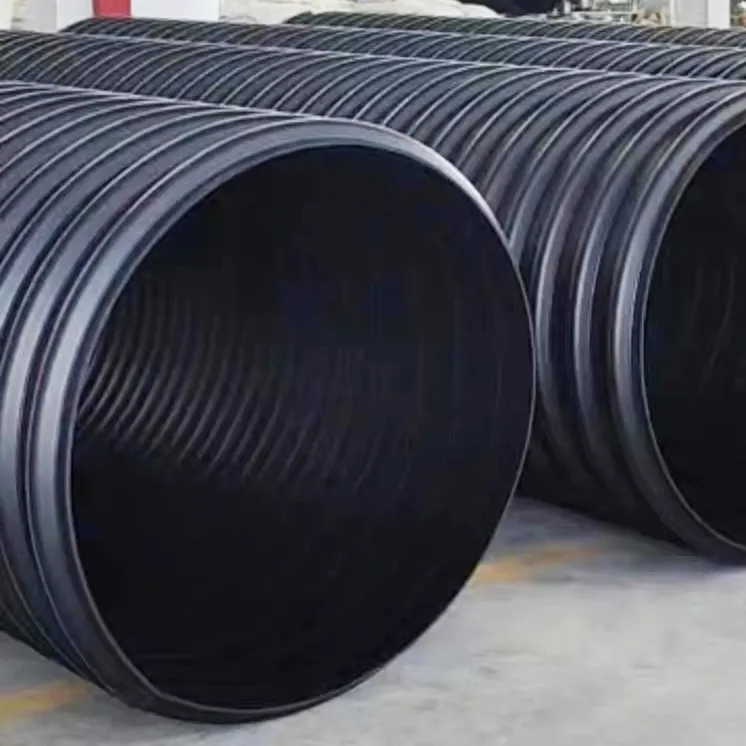PPR water pipe is a polymer material pipe. PPR is the abbreviation of English random copolymer polypropylene (Polypropylene-Random). Commonly known as type III polypropylene. PPR pipe is an updated product of UPVC water supply pipe, aluminum-plastic pipe, PE pipe, PE-X pipe and PE-RT pipe. Because it uses random copolymerization technology, the strength and high temperature resistance of polypropylene are well guaranteed, making it the main force in water pipe materials. This article will introduce the classification, advantages, color characteristics, installation technology, purchasing tips of PPR water pipes from many aspects, as well as the advantages and disadvantages of PPR compared with other pipes.
PP-R pipes are generally divided into two categories, one is hot water pipes and the other is cold water pipes. Hot water pipes are generally marked with red markings, and cold water pipes are marked with blue markings.
Cold water pipes are divided into two series, namely S5 series and S4 series. The S5 series corresponds to a pressure level of 1.25 MPa, which is a pipe with a pressure of 12.5 kg; the S4 series corresponds to a pressure level of 1.6 MPa, which is a pressure of 16 kg. pipeline.
Hot water pipes are also divided into two series, namely S3.2 series and S2.5 series. S3.2 corresponds to a 20 kg pressure pipe, and S2.5 corresponds to a 25 kg pressure pipe.
| Basic classification of PPR water pipes | ||
| Hot/cold water | Grade | Pressure |
| PPR Pipe for cold water | S5 | PN1.25(12.5kg) |
| S4 | PN1.6(16kg) | |
| PPR Pipe for hot water | S3.2 | PN2.0(20kg) |
| S2.5 | PN2.5(25kg) | |
PPR PIPE advantages
1. Hygiene, health and environmental protection. Polypropylene is an environmentally friendly material and can be used for drinking water transportation.
2. The joints are connected by hot melt and become one, 100% leak-free. Other materials are connected by wires, which are less impermeable and avoid the toxicity of glue bonding.
3. The conveying resistance is small.
4. The price is cheap and moderate.
5. Long service life, it can be used for 50 years when produced and used according to national standard GB/T18742.
PPR is the abbreviation of type III polypropylene. It adopts thermal welding method, has special welding and cutting tools, and has high reliability. The price is also very economical. The thermal insulation performance is also very good, and the pipe wall is also very smooth! The general price is 4-8 yuan per meter (4 tubes). Excludes connectors for inner and outer wires.
PPR pipe, officially called random copolymer polypropylene pipe, is the most commonly used water supply pipe in home improvement projects.
PPR pipe Color characteristics
Why are PPR water pipes different in color?
The PPR particles supplied by manufacturers come in different colors, such as gray, etc., but most companies purchase transparent raw materials, and different colors are added with different color masterbatch.
Is there an inevitable connection between the color and quality of PPR water pipes?
No. However, there are more cases where white PPR fails the light protection test, while gray and green do not have these problems. In addition, due to the influence of living habits, white PPR pipes are mostly used in the north, while gray PPR pipes are more common in the south.
PPR water pipes are divided into cold water pipes and hot water pipes. How to distinguish them?
·PPR pipes are divided into cold water pipes and hot water pipes. The difference is that there is a blue identification line on the cold water pipe and a red line on the hot water pipe.
In addition, PPR pipes have marks such as S5 S4 S3.2 S2.5. Generally, S5 S4 is a cold water pipe with a thinner wall thickness, and S3.2 S2.5 is a hot water pipe with a thicker wall thickness.
What are the characteristics of the connection technology of PPR water pipes?
The interface of the PPR pipe uses hot melt technology, and the pipe mouths are completely integrated together. Therefore, once the installation pressure test is passed, there will never be water leakage again, and the reliability is extremely high.
PPR water pipe product disadvantages
The main disadvantages of PPR water pipes are: high temperature resistance and slightly poor pressure resistance. The long-term operating temperature cannot exceed 70°C; the length of each section is limited and cannot be bent for construction. If the pipeline is laid over a long distance or has many corners, it will be difficult during construction. A large number of joints are used; the pipes are cheap but the fittings are relatively expensive. However, in terms of comprehensive performance, PPR pipe is a cost-effective pipe, so it has become the first choice material for home water pipe renovation.
Compared with other types of pipes: galvanized iron pipes have many shortcomings and were banned by the Ministry of Construction in 2000; although aluminum-plastic pipes have good high temperature resistance and are easy to construct, when used as hot water pipes, due to long-term thermal expansion and cooling Shrinkage will cause misalignment of the pipe wall and cause leakage; copper pipes are durable and environmentally friendly, but are not widely used due to their high price and high construction requirements.
PPR water pipe buying Tips
Having just purchased a new home, many people are busy decorating their love nest. How to choose the right pipe material at the right price is a very important thing for them. The following tips will teach you how to identify the quality of PPR pipes.
1. "Touch": whether the texture is fine and whether the particles are uniform. PPR pipes on the market mainly come in white, gray and green colors. Generally, recycled plastic cannot be made in white, so many people often think that white is the best. In fact, this view is rather one-sided. With the update and improvement of technology, color is not the criterion for distinguishing the quality of PPR pipes. Checking whether the pipe is good or bad won't solve the problem. If you touch it, if the particles are rough, they may be adulterated with other impurities.
2. "Smell": whether there is any smell. The main material of PPR pipe is polypropylene. Good pipes have no smell, while bad pipes have a strange smell. It is likely that they are mixed with polyethylene (PE) instead of polypropylene.
3. "Pinch": PPR pipe has considerable hardness and can be easily pinched into a deformed pipe. It is definitely not a PPR pipe.
4. "Smash": A good PPR pipe has good "resilience". What is too easy to smash is because there is too much calcium carbonate filler, so it is naturally not a good PPR pipe. A PPR pipe that cannot be smashed may not necessarily be a good pipe. The key lies in the raw materials and processing technology.
5. "Burn": Light the fire and burn it. It is very intuitive and effective. PPR pipes whose raw materials are mixed with recycled plastics and other impurities will emit black smoke and have a pungent smell; good materials will not emit black smoke and are odorless after burning, and the melted liquid will still be very clean after burning.
6. According to national testing standards, some simple testing items can be identified through the senses.
Installation issues
1. PP-R pipes have lower hardness and poorer rigidity than metal pipes. They should be protected during transportation and construction to avoid mechanical damage caused by inappropriate external forces. The location of the pipes should be marked after concealing to avoid damage to the pipes during secondary decoration.
2. There is a certain low-temperature brittleness of PP-R pipes below 5°C. Care should be taken during winter construction. When cutting the pipes, use a sharp knife to cut slowly. Do not press or knock the installed pipes. If necessary, cover and protect the parts that are susceptible to external forces. things.
3. PP-R pipes are prone to aging and degradation when exposed to ultraviolet rays for a long time. They must be wrapped with a dark protective layer when installed outdoors or in direct sunlight.
4. Except for mechanical connection methods such as threaded inserts or flanges when connecting PP-R pipes to metal pipes or water heaters, the rest should be hot-melt connections to integrate the pipes without leakage points.
5. The linear expansion coefficient of PP-R pipe is relatively large (0.15mm/m°C). Technical measures must be taken to prevent pipe expansion and deformation when laying pipes for surface installation or non-direct burial.
6. After the pipeline is installed, it must be pressure tested before sealing (directly buried) and covering the decorative layer (not directly buried and concealed). The pressure test pressure of cold water pipes is 1.5 times the working pressure of the system, but not less than 1.0MPa; hot water pipes The test pressure is twice the working pressure, but shall not be less than 1.5MPa. The pressure test time and method are specified in the technical regulations.
7. When laying PP-R pipes in the open or not directly buried or concealed, supports and hangers must be installed according to regulations.
Hot melt connection problem
1. When connecting PPR pipes and fittings with hot melt, do not put wires directly on them. You can use flanges to connect to metal pipes. When connecting to water heaters, you must use pipe fittings with metal inserts;
2. Be sure to use trustworthy hot melt tools when performing construction, so as to ensure the quality of hot melt;
3. Use special building materials to cut the pipes, and the cuts should be smooth and without burrs;
4. When cleaning the place where pipes and fittings are welded, do not let sand and dust affect the quality of the joint. Use a heating head that matches the size of the pipe to be welded and place it on the hot melter and turn on the power. to allow the heating head to reach the most appropriate temperature;
5. You can use a pencil to mark the welding depth on the pipe;
6. Place the pipes and fittings into the splicer and heat them according to the required time;
7. After heating, take out the pipes and pipe fittings immediately and connect them immediately. When the pipes and pipe fittings are connected and matched, if their positions are wrong, you can make slight adjustments within a certain period of time, but the twisting The angle cannot exceed five degrees;
8. After the connection is completed, be sure to hold the pipes and fittings firmly with your hands to allow them sufficient time to cool. After cooling to a certain level, you can let go and install the following pipes.
PPR Pipe competition
PPR pipe is cost-effective and environmentally friendly
As a new type of water pipe material, PPR pipe has unique advantages. It can be used as both a cold water pipe and a hot water pipe. The interface of the PPR pipe uses hot melt technology, and the pipes are completely fused together. Therefore, once the installation and pressure test is passed, it will not age and leak over time like aluminum-plastic pipes.
Advantages: moderate price, stable performance, heat resistance and insulation, corrosion resistance, smooth inner wall without scaling, safe and reliable pipeline system without penetration, and service life of up to 50 years.
Disadvantages: The construction technology requirements are high and special tools and professionals are required for construction to ensure system safety.
Copper pipes are corrosion-resistant and can be sterilized
It is a high-quality product among water pipes. There are two ways to connect copper pipes: ferrules and welding. Like aluminum-plastic pipes, ferrules have the problem of aging and water leakage for a long time. Most copper pipes are installed by welding. Welding means that the interfaces are oxygen welded together, so that they can never leak like PPR water pipes. Because of its high price, it is generally used in high-end apartments or villas.
Advantages: high strength, stable performance, sterilizable, and not easy to corrode.
Disadvantages: high price, difficult construction, easy to cause heat loss in cold winter, high energy consumption, and high use cost.
Aluminum-plastic pipes are prone to aging and leakage
Aluminum-plastic pipes were once a popular pipe material on the market. Due to their light weight, durability and easy construction, their bendability is more suitable for use in home decoration. In Guangdong and Shanghai, where the decoration concept is relatively new, aluminum-plastic pipes have gradually lost their market and have been eliminated.
Advantages: relatively cheap, can be bent at will, smooth surface, easy to construct.
Disadvantages: easy to age, many hidden dangers in use, short service life. Practice has proved that after one year of use, leakage is very easy to occur at the pipe connections.
Galvanized pipes are prone to clogging and pollution
When you suddenly open a water pipe that has not been used for a long time, you find "yellow" water flowing out. In the past, this happened easily in galvanized iron pipes in old houses. Such "yellow" water is also harmful to the human body. China's Ministry of Construction and four other ministries and commissions have also issued documents clarifying that galvanized pipes will be banned from 2000. Galvanized pipes are rarely used in cold water pipes in newly built residential areas.
Advantages: complete varieties and many matching pipe fittings.
Disadvantages: It is an obsolete product that is prohibited from use by the state. It is easy to corrode and rust, causing poor water flow and easily causing water pollution.
PVC pipes are easy to break and deform
It is actually a kind of plastic pipe, and the joints are usually glued. Because its frost resistance and heat resistance are not good, it is difficult to be used as a hot water pipe; its strength is not suitable for the pressure-bearing requirements of water pipes, so cold water pipes are rarely used. In most cases, PVC pipes are suitable for electrical wire conduits and sewage pipes. In addition, the chemical additive phthalein that makes PVC softer has a great impact on the kidneys, liver, and testicles in the human body, and can cause cancer and kidney damage, so it is not recommended for everyone to buy it.
Advantages: lightweight, easy to install, low cost, and not easy to corrode.
Disadvantages: Poor quality will be brittle, easy to break, and easily deformed when exposed to heat.
As an excellent construction pipe material, PPR water pipe is widely used in the construction industry with its excellent performance and many advantages. Its main features include high temperature resistance, pressure resistance, corrosion resistance, and is made of environmentally friendly materials with good health and safety. In addition, PPR water pipes are easy to install, lightweight, not easy to age, and have a long service life. In building water supply systems, PPR water pipes have become the preferred pipeline material for many engineering projects due to their reliability, durability and protection of water quality. Our factory has a mature production line for ppr water pipes. If you need ppr water pipes, please contact us or leave your contact information on the website.



981.webp)

 (1)379.webp)

294.webp)
476.webp)
420.webp)
146.webp)
460.webp)
287.webp)
274.webp)
688.webp)


